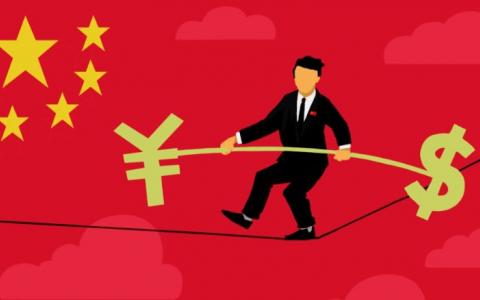
(Bloomberg) Donald Trump gets the headlines, but he’s not the only one worried that the dollar’s remarkable ascent is causing economic harm. Some even worry it could trigger a recession.
It’s hard to characterize the rise as anything but historic. One long-term gauge of the greenback’s performance that stretches back to the late 1960s is having its best decade on record, emerging from the wreckage of the financial crisis with a 25% surge since the end of 2009. Another index from Bloomberg bottomed out a few weeks before the U.S. lost its AAA rating from S&P in 2011, only to jump 32% since then as the dollar trounced every other Group-of-10 currency along the way.
But what’s good for dollar bulls is bad for many others. The surge tends to erode the profits of U.S. multinationals that help power the world’s largest economy, and also raises costs for foreign corporations that have trillions of dollar-denominated debt. This is all especially problematic today amid growing signs the global economy is teetering on the edge of a recession.
Coca-Cola Co. is among those feeling the pain, to name one prominent example. The Atlanta-based beverage giant recently noted the headwind it faces from the strong dollar -- though it’s expecting this to ease soon. The U.S. president often complains about the rally, including last week when he said it undermines American manufacturers like Caterpillar Inc. and Boeing Co.
“Where the dollar is now could push the global economy into a more difficult situation and raise the risks of a recession,” said Hans Redeker, Morgan Stanley’s London-based global head of FX strategy. “Any further appreciation could be challenging.”
Granted, not everyone sees the greenback as a recessionary trigger: Bank of America global economist Aditya Bhave says the U.S. economy is not overly reliant on exports for growth.
Morgan Stanley’s Redeker and Brandywine Global Investment Management’s Jack McIntyre, by contrast, see the dollar as a potential catalyst for the next U.S. and global recession. Anticipating the dollar could wind up a victim of its own success, McIntyre is bracing for the currency to drop 25% in the next five years and says his firm has been buying South Korean won, Czech koruna and New Zealand dollars over the past month to prepare. Morgan Stanley strategists recommend the yen and Swiss franc.
For Redeker, the dollar may act as a potentially negative force on the balance sheets of corporations outside the U.S. According to the Bank for International Settlements, dollar-denominated liabilities to non-bank borrowers outside the U.S. reached $11.8 trillion as of March.
Redeker says the rising greenback has already spurred a slump in capital expenditures throughout much of the world that’s led to deleveraging by corporations based beyond America’s borders.
Tight Conditions
The strategist says the greenback is overvalued by 10% and an extended Federal Reserve easing cycle, even while other major central banks are doing the same thing, could weaken the dollar and go a long way toward improving global economic conditions.
“The dollar’s appreciation in the past few months is creating monetary tightness everywhere,” he said in an interview from London.
McIntyre, whose firm manages $75 billion, says significant dollar appreciation worsens financial results for S&P 500 companies, ultimately leading to fewer jobs and more unemployment. That will trigger a U.S. recession that drags down global growth, too, the Philadelphia-based portfolio manager said.
The dollar’s multiyear run is likely approaching an end, based on the length of the three most recent bullish cycles, he says. McIntyre sees a bearish cycle about to start that lasts five to seven years, while currencies just about everywhere else outperform.
“Currencies are unique in that they are not always driven by interest-rate differentials; growth differentials are more important,” McIntyre said in an interview. “As other central banks move into a position to cut rates, that’s going to be pro-growth for those countries, and we don’t see any scenario in which the dollar continues to keep powering ahead for the next several years.”



